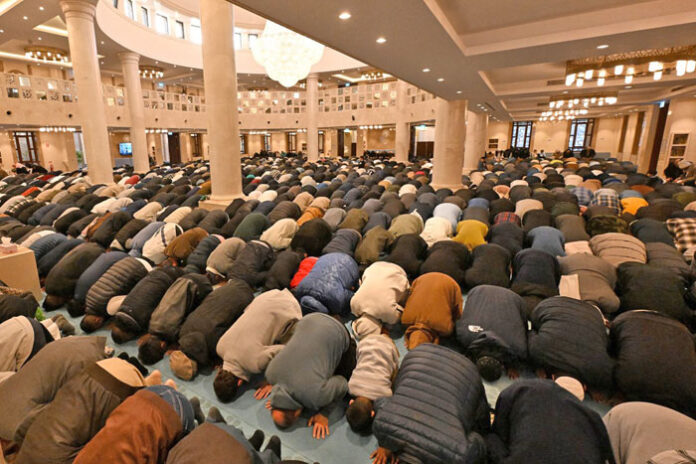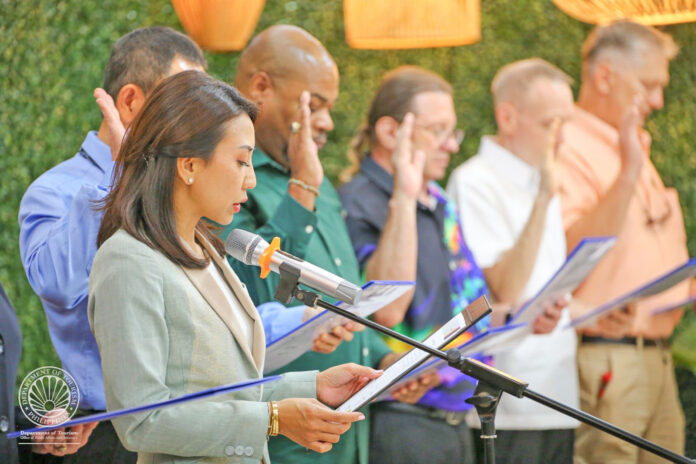MINA, Saudi Arabia—Pilgrims were set to perform the last major ritual of the hajj—the “stoning of the devil” —on Friday, as Muslims around the globe celebrated the beginning of the Eid al-Adha holiday.
Starting at dawn, the more than 1.6 million Muslims taking part in the pilgrimage will throw seven stones at each of three concrete walls symbolizing the devil in the Mina valley, on the outskirts of the holy city of Mecca.
The ritual commemorates Abraham’s stoning of the devil at the three spots where it is said Satan tried to dissuade him from obeying God’s order to sacrifice his son.
This year’s hajj saw authorities implementing a range of heat mitigation efforts alongside a wide-ranging crackdown on illicit pilgrims—resulting in noticeably thinner crowds and a heavy security presence at holy sites in Mecca and surrounding areas.
The measures were aimed at preventing a fatal repeat of last year’s hajj that saw 1,301 people die in temperatures that hit 51.8 degrees Celsius (125 degrees Fahrenheit).
Saudi authorities said a majority of those deaths were among pilgrims who illegally snuck into Mecca and lacked access to accommodation and other services aimed to keep pilgrims safe and protected from the searing desert heat.
Hajj permits are allocated to countries on a quota basis and distributed to individuals by a lottery system.
But even for those who can secure them, the high costs spur many to attempt the hajj without a permit, even though they risk arrest and deportation if caught.
The stoning ritual in the Mina valley was the scene of a fatal stampede in 2015, when 2,300 people were killed in one of the deadliest hajj disasters.
Saudi Arabia earns billions of dollars a year from the hajj, and the lesser pilgrimage known as umrah, undertaken at other times of the year.
The pilgrimages are also a source of prestige for the Saudi monarch, who is known as the Custodian of the Two Holy Mosques of Mecca and Medina.
The end of the hajj coincides with the beginning of Eid al-Adha — an annual feasting holiday marked by the slaughter of an animal — typically a goat, sheep, cow, bull or camel.
On Thursday, Muslim worshippers prayed on Mount Arafat during the high point of the hajj pilgrimage Thursday, as authorities urged them to avoid the hottest hours of the day after tragedy struck last year.
Thousands of white-robed pilgrims recited Koranic verses from dawn on the 70-meter rocky rise near Mecca, where the Prophet Mohammed is believed to have given his last sermon.
But numbers thinned by midday following official warnings for pilgrims to stay inside between 10:00 am and 4:00 pm.
“I came here early to (avoid) the sun and later I will pray inside my tent,” said 54-year-old Adel Ismail, from Syria.
Saudi authorities have taken several steps to reduce the risk from heat at the hajj, which has drawn more than 1.6 million pilgrims to one of the world’s hottest regions, according to fresh figures published Thursday.
Barring a few years of COVID restrictions from 2020-2022, this hajj season has recorded the lowest number of pilgrims in over three decades.
The dip comes after 1,301 people died in temperatures that hit 51.8 degrees Celsius last year — most of them illegal pilgrims according to Saudi authorities, who implemented stringent measures to reduce their numbers this season.
Unregistered, non-fee paying pilgrims, lack access to the full amenities offered during the hajj including air conditioned tents, making them particularly vulnerable to heat-related health risks.
On Thursday, icepacks were handed to people walking towards Mount Arafat, with some placing the small bags on their heads.
With temperatures reaching 42C (107.6F), officials ushered people away if they spent too long in one place near the boldered hill, which had fans spraying mist and cool air at its foot.








